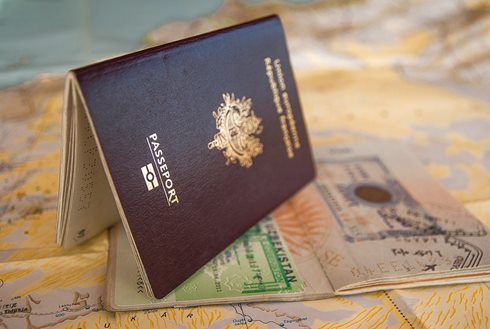Discover how best to apply for the different categories of Schengen Visas that travelers can use to visit Austria and other countries in the Schengen area.

The Schengen visa allows international travelers from non-EU foreign countries to visit the 26 member countries of the EU that are signatories of the Schengen agreement.
The Schengen visa is appropriate for short-term visits to Austria and any of the 26 Schengen area countries that do not exceed more than 90 days within a given 180-day period. Travelers can apply for an Austria visa online or through an Austrian embassy or consulate in order to visit the country.
The Austrian government also offers a variety of Schengen visas to international travelers depending on their nationality, the nature of their visit, and the length of their stay. The Schengen visa allows travelers to move freely within the Schengen area.
ETIAS or Schengen Visa?
Beginning in 2022, the Austrian government will be implementing the ETIAS visa waiver program. Travelers from countries that have signed visa liberalization agreements with Austria will be able to acquire an Austrian visa online without appearing in-person at an Austrian embassy or consulate.
Obtaining the Schengen visa will still be mandatory for travelers from other countries that have not signed the visa liberalization agreements with Austria.
International travelers seeking a Schengen visa will need to complete an online application form, submit the required documents, request an in-person interview at a local Austrian embassy or consulate, and pay the visa processing fee.
Types of Schengen Visa for Austria
Eligible international travelers can apply for different types of Schengen visas catering to the particular nature of their visits to Austria, which can include:
- Official visits
- Short-term studies
- Research projects
- Medical treatment
- Participating in cultural and sporting events
- Visiting friends and family
- Transit
- Business
- Tourism
The Schengen visa as well as the upcoming ETIAS visa waiver have primarily been developed as mechanisms allowing ease of application and the freedom of travel throughout the Schengen region.
What Are the Pre-application Requirements?
Before beginning, the application process travelers to Austria will need to ensure that they have all the requirements in place before beginning the application process. Primarily, travelers will need to ensure that their passport or travel document meets the required validity.
For a successful Schengen visa application, international travelers will also require a passport that is less than ten years old and has a remaining validity of 3 months from the date of departure from Europe.
Qualification standards have been set by the Austrian government for international travelers seeking the Schengen visa. To meet these standards, travelers will need to submit the following along with their application for a Schengen visa:
- Two passport-sized recent photographs of the traveler
- A travel medical insurance policy with a minimum cost coverage of ?30,000
- A cover letter explaining the purpose of the trip
- Proof of sufficient financial means to cover the entirety of the traveler’s stay in Europe
- Proof of hotel or other accommodations as well as a flight itinerary.
The cost of the Schengen visa is 80 Euros per person. Travelers can deposit the payment for the visa using a valid debit or credit card. The cost of the Schengen visa can vary depending on the age of the traveler and other factors, however, it currently is set at a maximum limit of 80 Euros.
Traveling to Austria on the Schengen Visa
Non-EU foreign travelers who are required to obtain a Schengen visa before visiting Austria can begin the application process by providing biographical and passport information on the application form.
Travelers will need to ensure all information provided on the application form is accurate and matches the information shown on the traveler’s passport.
Travel best practice dictates that foreign travelers to Austria begin the application process early to mitigate any delays that may occur in the application process. Applicants of the Schengen visa can begin applying as early as 3 months up to 3 weeks ahead of their intended date of travel to Austria.
The Schengen visa is issued as a single, double, or multiple entry visas. They will need to present their passport to European border officials to gain entry into Austria. European/Austrian border officials have the final say with regards to allowing entry of travelers into Europe/Austria.
Additional supporting documentation with the passport and Schengen visa may be required for entry at the European/Austrian border. Therefore, travelers should keep copies of their documents with them when they travel to Europe/Austria.
Short-term or Long-term Stay in Austria
The maximum number of days allowed in the Schengen Area and the number of entries allowed will be shown on the visa. Foreign travelers must have their Schengen visa stamped at the European/Austrian border to gain entry into the Schengen region.
International travelers that are interested in extending their stay in Austria can apply for the Austria National Visa D, which will allow them an additional 90-day stay in the country.
Schengen visas are short-term visas that do not allow travelers to take up employment in Austria or any of the other Schengen area countries. Travelers should plan their trip to Austria such that they depart the country and the Schengen area before the 90 days allowed on the visa has been exhausted, to avoid overstaying their visa.


